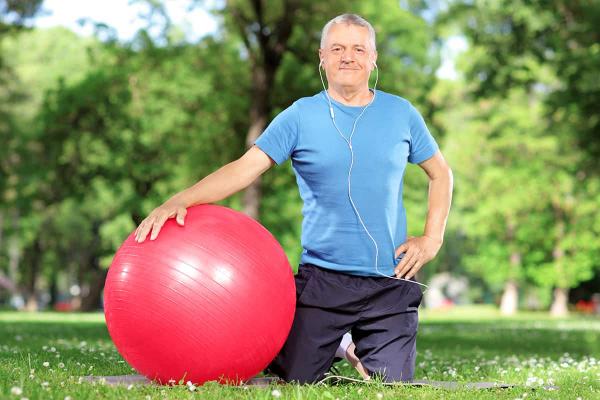
Maintaining a healthy exercise routine is a fundamental part of life for all ages. Each age group stands to benefit from the advantages regular exercise can bring to one's overall health. This is especially true for older adults who are 50 years and older.
Regular exercise combats all forms of disease by strengthening muscles, including the heart. This improves circulation which reduces the occurrence of high cholesterol and high blood pressure. Regular exercise along with a healthy diet reduces the risks of heart attack and stroke.
Yet not many 60 year olds can start a rigorous exercise routine without injury. Most need to practice an exercise routine that is challenging yet doesn't provoke stress or cause injury.
The National Institutes on Health point out that there are 4 general types of exercise that are necessary to maintain good health, particularly in older adults.
Strength training
By working with light weights or exercises that use one's own weight to build muscle increases metabolism which keeps blood sugar in check.
Balance
According to NIH, 300,000 older adults are admitted to the hospital for broken hips each year. Oftentimes, medications can cause side effects such as dizziness or confusion that increase the likelihood of falls with older adults. Other older adults may be suffering from problems with the inner ear which can impede one's depth perception. Also, impaired vision caused by poor lighting or other household hazards or diseases like cataracts makes it difficult for older adults to safely navigate around the house. Once you have cleared your exercise routine with your physician, you can experiment with various balancing exercises.
Doug Schrift of Eldergym.com describes this type of exercise as an opportunity to ignite your "internal spatial orientation." For example, if you close your eyes and start raising your arm above your head, you should have a pretty good sense of the location of your arm because of your inner sense of feedback. Balancing exercises strengthen that sensation.
Those who play tennis on a regular basis improve their sense of balance. But sometimes all it takes is placing a strip of masking tape on the floor. With a chair close by for support, you simply practice walking on that line. Dancing, high knee marching and high above-the-head reaching moves are all beneficial forms of balancing exercises.
Stretching
Encouraging and maintaining flexibility is an important part of good health. The Asian culture, particularly the Chinese community, have been practicing the art of Tai Chi for centuries. This series of movements are ideal in all aspects of exercise. It builds strength, trains on balance and encourages stretching while not creating a negative impact on the body.
Endurance
Strengthening the skeleton and muscles is important. So is strengthening the cardiovascular system. "The most underrated form of exercise out there is walking," said Dr. Jeremy Osmond, Director of Rehabilitation at Orchard Park Post-Acute Rehab Center in Orem, Utah. "Everybody should be doing it. It's the simplest form of exercise but it is so healthy and so good for you."
Also, swimming, biking, low-impact hiking, even household chores increase the heart rate for an extended period of time. Start by exercising in five minute intervals and build from that.
Exercise is something everybody needs to incorporate into their daily routine, and older adults are no exception. By investing a small amount of time every day for exercise, you can enjoy big rewards in maintaining good health.

